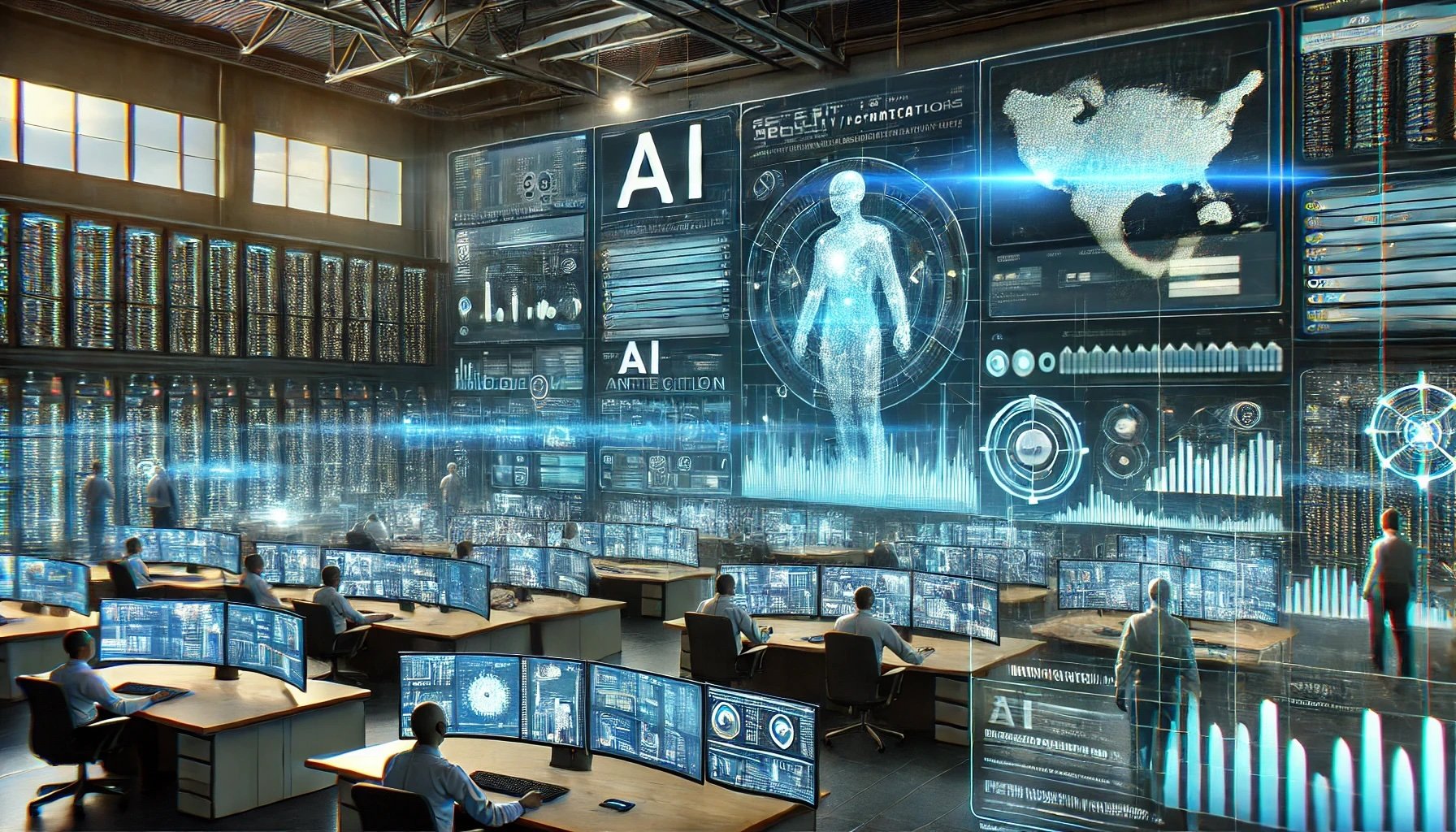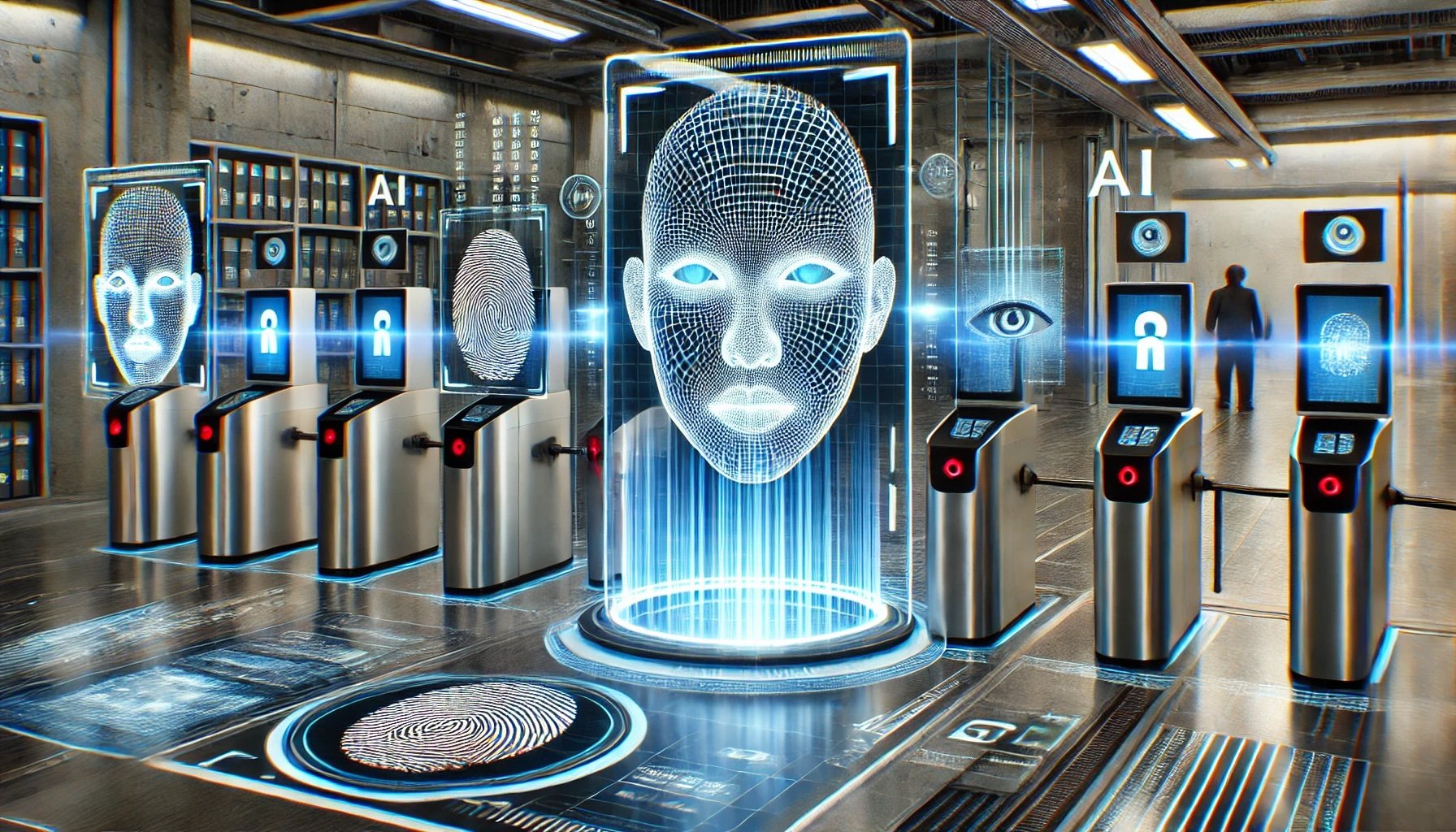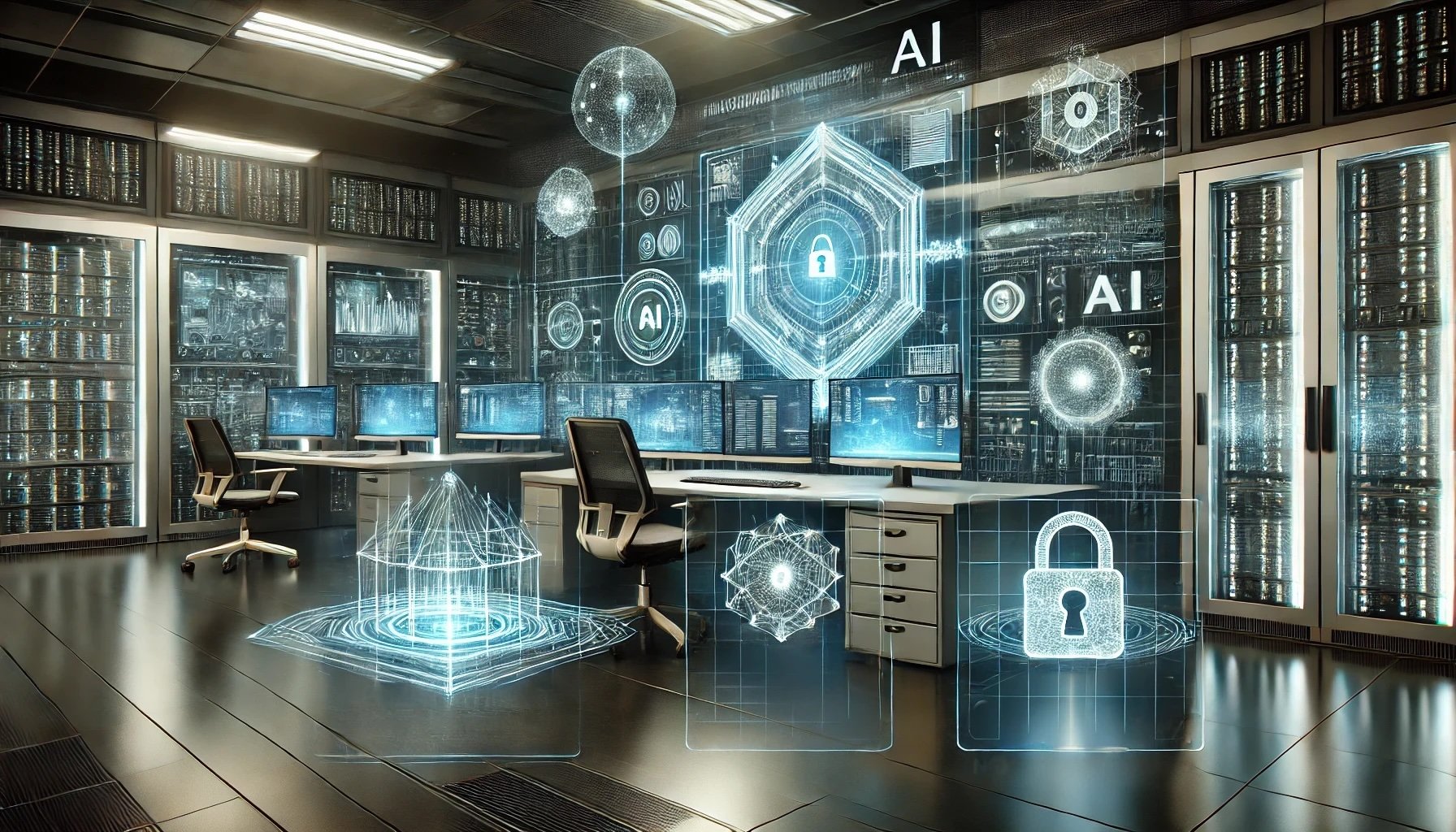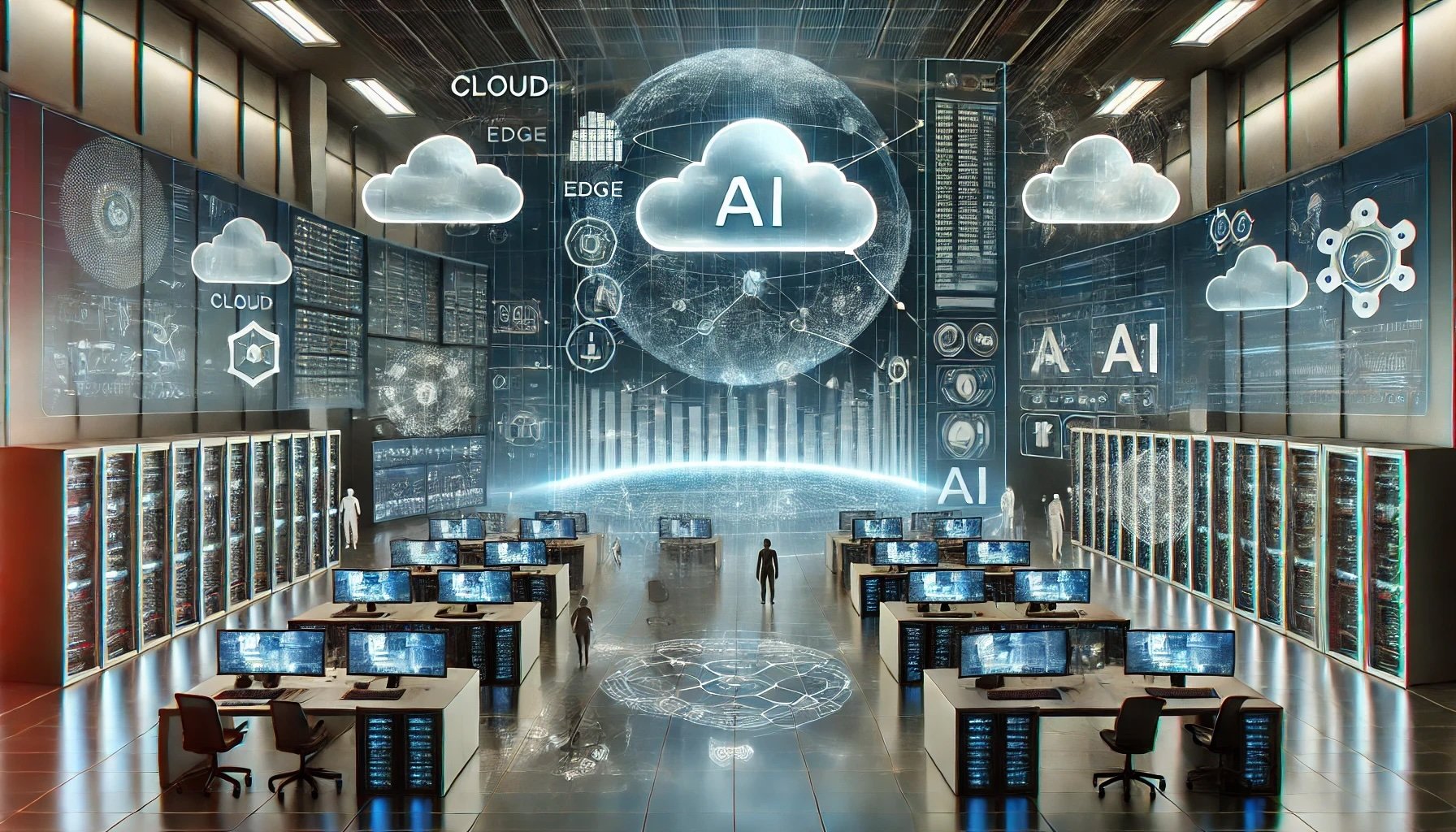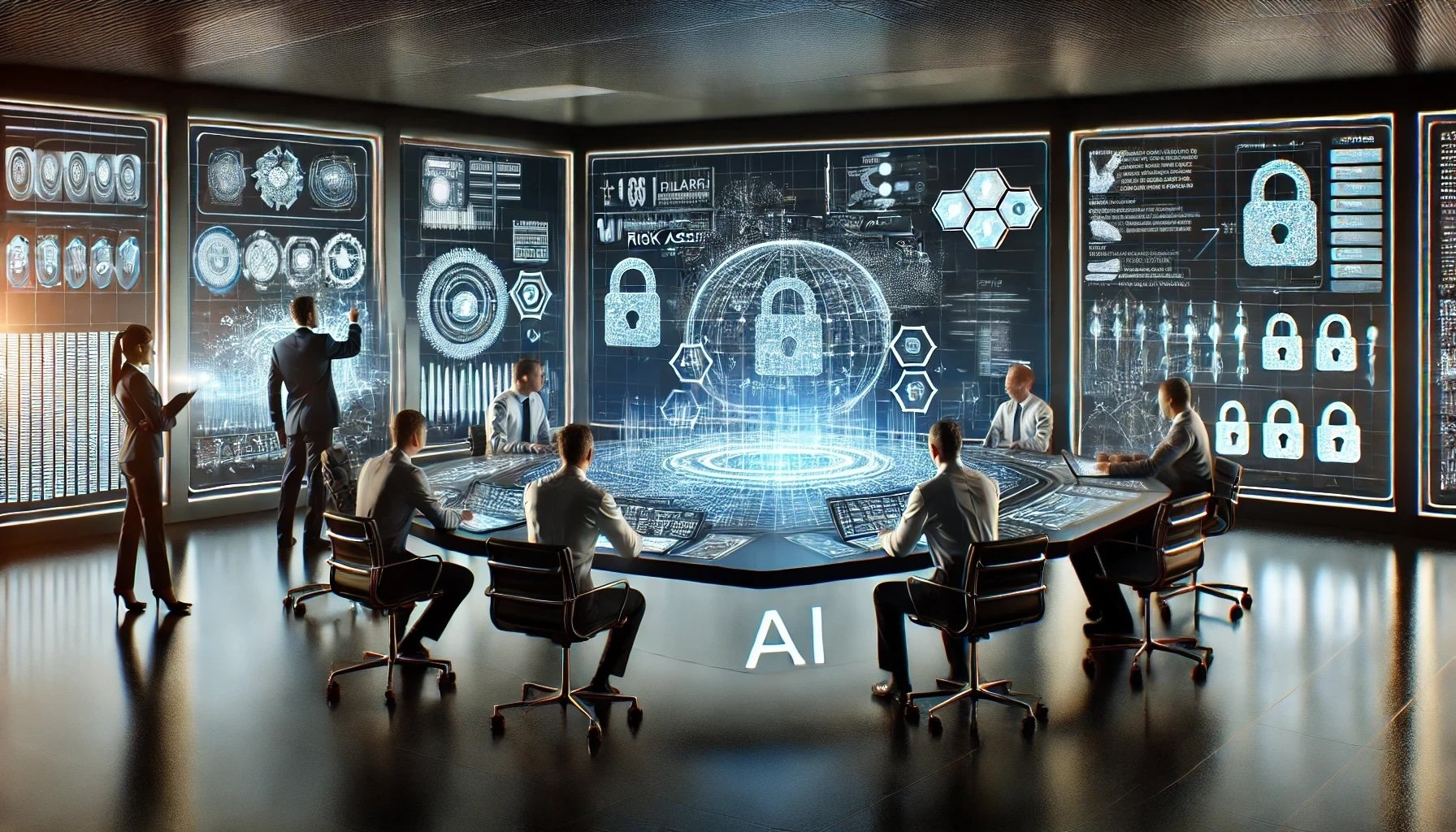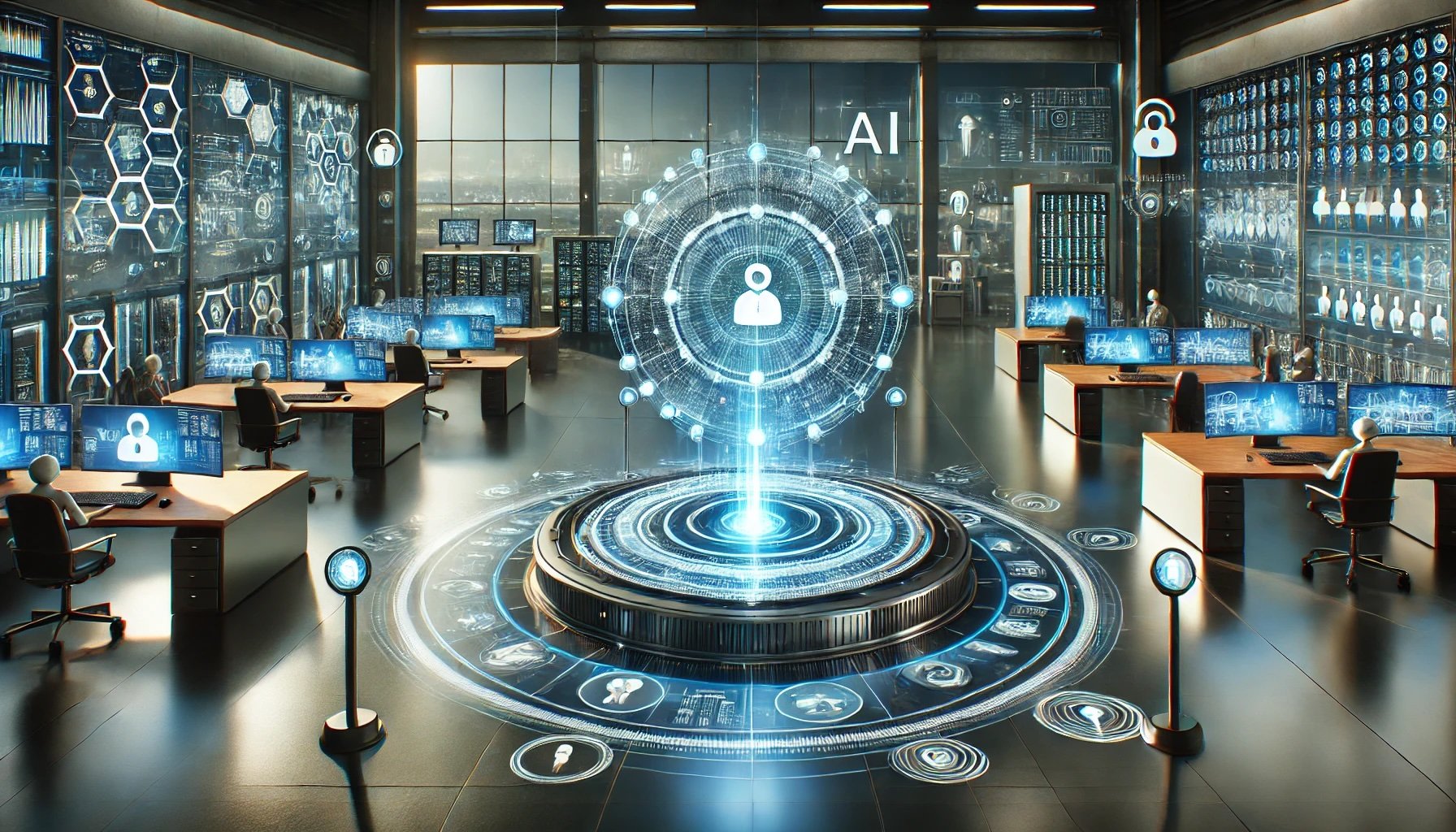Top AI Trends Shaping the Security Industry in 2025: Expert Insights
Introduction: The Transformative Power of AI in Security
Artificial intelligence (AI) is fundamentally changing how security systems operate. From physical security measures to advanced cybersecurity defenses, AI-powered solutions are making it easier to detect threats, prevent incidents, and respond to risks faster than ever before. As we move into 2025, the security industry is seeing an unprecedented shift, with AI at the forefront of innovation.
How AI is Reshaping Security
Security has always been about staying one step ahead of potential threats. However, with the growing complexity of risks — ranging from cyberattacks to unauthorized access and real-world safety concerns — traditional security methods are no longer enough. AI is stepping in to bridge this gap, providing more intelligent, automated, and proactive security solutions.
Physical Security: AI-powered surveillance cameras can now do more than just record footage. With real-time object detection, motion tracking, and facial recognition, security systems can identify potential threats and suspicious activities automatically. For example, AI can detect unattended bags in public places, unauthorized access in restricted areas, or unusual behavior patterns in crowded environments.
Digital Surveillance: Online platforms and businesses rely on AI to monitor vast amounts of digital content. Whether it’s detecting fraudulent transactions, preventing identity theft, or analyzing suspicious behavior in real time, AI-driven digital surveillance is becoming essential. Machine learning models can continuously adapt, learning from new threats to improve detection accuracy.
Cybersecurity: AI is revolutionizing how companies protect their data. Instead of relying on static security measures, AI-driven cybersecurity solutions can analyze millions of data points to detect anomalies, identify cyber threats, and predict potential breaches before they happen. AI-powered threat intelligence platforms can detect patterns in hacking attempts, flag phishing attempts, and even automate responses to cyberattacks.
AI’s ability to process and analyze massive amounts of data in real time makes it a game-changer for security. In an era where cybercriminals and malicious actors are constantly developing new tactics, having AI as an ally ensures organizations can stay ahead of evolving threats.
Why 2025 is a Critical Milestone
The year 2025 marks a significant turning point for AI in security. Several key developments are driving this transformation, making AI-powered security solutions more advanced, accessible, and reliable than ever before.
Breakthroughs in Computer Vision and Machine Learning
Over the past few years, AI models have become significantly more accurate and efficient. Deep learning algorithms, which enable computers to recognize patterns and make decisions, are now more sophisticated, reducing false positives and improving security reliability. For instance, modern AI-powered facial recognition can identify individuals even in low-light conditions, while object detection models can differentiate between normal and suspicious activities with high precision.Greater Availability of AI-Driven Solutions
AI security technologies that were once available only to large enterprises are now becoming more accessible to small and medium-sized businesses. Cloud-based AI services allow organizations to integrate advanced security solutions without investing in expensive infrastructure. Additionally, AI-powered APIs make it easier for companies to deploy features like automated threat detection, facial recognition, and background removal, enhancing security measures with minimal effort.The Rising Demand for AI in Security
With increasing cybersecurity threats, data privacy regulations, and the need for stronger physical security measures, businesses and governments are looking for more effective security solutions. AI’s ability to provide real-time monitoring, automated decision-making, and predictive insights makes it the ideal technology to meet these growing demands.
As AI continues to evolve, it is becoming a fundamental pillar of modern security strategies. In 2025, companies that adopt AI-driven security solutions will be better equipped to protect their assets, data, and people — ensuring a safer and more secure environment for everyone.
Real-Time Threat Detection Through Advanced Analytics
The ability to detect threats in real time has become one of the most critical advancements in security technology. In the past, security teams had to rely on manual monitoring of surveillance footage, which was time-consuming, prone to human error, and often reactive rather than proactive. Today, artificial intelligence is revolutionizing threat detection by automating surveillance and identifying security risks before they escalate. AI-driven security analytics are enhancing safety across various industries, from retail and public spaces to corporate offices and government institutions.
Next-Generation Video Surveillance
Modern surveillance systems are no longer just about recording footage — they are becoming intelligent, proactive, and highly responsive. AI-powered computer vision enables security cameras to analyze live video streams and identify threats in real time.
Automated monitoring for suspicious behavior
Instead of relying on human operators to constantly watch screens, AI can monitor video feeds 24/7, flagging any suspicious activity instantly. For example, in crowded public spaces like airports or train stations, AI-powered surveillance systems can detect unattended bags, unusual movements, or aggressive behavior. In retail environments, AI can help prevent theft by identifying suspicious movements, such as individuals frequently reaching into their bags or attempting to conceal items.Object and individual detection in high-risk areas
AI-driven video analytics can recognize specific objects, such as weapons, unauthorized vehicles, or restricted materials. Facial recognition technology, when ethically applied, can verify identities and detect individuals on watchlists. This capability is particularly valuable in high-security locations such as banks, stadiums, and government buildings.Faster alerts and response times
One of the biggest advantages of AI in surveillance is its ability to provide instant alerts. When a security breach is detected, AI-powered systems can automatically notify security teams, reducing response time and minimizing potential damage. Unlike traditional security setups that rely on delayed human intervention, AI ensures that threats are addressed as they happen.
By integrating computer vision into surveillance networks, organizations can significantly improve their security posture, reduce workload on human operators, and increase the effectiveness of their threat detection systems.
Anomaly Detection and Predictive Insights
Beyond recognizing known threats, AI excels at identifying unusual patterns that might indicate a potential security risk. This capability, known as anomaly detection, is transforming the way organizations approach security by shifting from reactive responses to proactive prevention.
Detecting patterns in large data sets
AI-powered security systems analyze vast amounts of data to establish normal behavioral patterns. By continuously learning from new data, deep learning models can differentiate between everyday activity and suspicious deviations. For example, in office buildings, an AI system might recognize that employees typically enter through a main entrance between 8 AM and 10 AM. If someone tries to access the building through a restricted side door at an unusual hour, the system would flag it as an anomaly and alert security personnel.Lower false-positive rates and improved accuracy
Traditional security systems often trigger false alarms due to rigid rule-based programming. AI-based anomaly detection reduces false positives by considering multiple factors before flagging an event as suspicious. For example, instead of alerting security every time someone walks near an entrance after hours, an AI model would analyze additional context — such as whether the individual has authorized access, if they are carrying suspicious objects, or if they are exhibiting unusual movement patterns. This leads to more accurate threat identification and fewer unnecessary disruptions.Predicting potential threats before they occur
By analyzing historical data, AI can predict potential security breaches before they happen. For instance, in cybersecurity, AI can detect early signs of phishing attacks or unauthorized access attempts based on past incidents. In physical security, AI can forecast crime-prone areas based on past events and adjust security measures accordingly.
AI-driven anomaly detection and predictive analytics provide security teams with the insights they need to act before a situation escalates. By identifying irregular patterns and minimizing false alarms, these technologies ensure that security resources are focused on real threats rather than wasted on routine or harmless activities.
With AI-powered surveillance and predictive security analytics becoming more advanced, organizations can now detect threats with greater accuracy, respond faster to incidents, and even prevent potential security breaches before they happen. As the security industry moves into 2025, real-time threat detection will continue to play a crucial role in creating safer environments for businesses, communities, and individuals.
Biometrics in Focus: From Facial Recognition to Multi-Factor Authentication
Biometric security has become one of the most reliable and efficient ways to verify identities. As businesses, governments, and institutions strive for stronger access control and fraud prevention, AI-powered biometrics are becoming an essential part of modern security systems. Instead of relying solely on traditional methods like swipe cards, passwords, or PIN codes, organizations are integrating AI-driven biometrics to ensure higher accuracy, convenience, and security.
Facial Recognition for Secure Access
Facial recognition technology has made significant advancements in recent years, allowing organizations to move beyond traditional security measures. Instead of requiring employees or visitors to carry physical access cards or memorize PIN codes, AI-driven facial recognition systems can verify identities in seconds.
Moving Beyond Outdated Authentication Methods
Traditional security methods, such as key cards or PINs, come with inherent risks. Physical cards can be lost, stolen, or cloned, while passwords and PIN codes can be easily shared or forgotten. Facial recognition eliminates these vulnerabilities by linking authentication to a unique physical trait — one’s face.Enhanced Accuracy and Speed
Modern AI-driven facial recognition systems use deep learning to analyze facial features with extreme precision. Unlike early versions of facial recognition that struggled with lighting conditions, aging, or small changes in appearance (such as facial hair or glasses), today’s AI models can adapt and recognize individuals under various conditions. This level of accuracy significantly reduces unauthorized access and streamlines entry processes, making security both more effective and convenient.Use Cases in Various Industries
Many industries are already benefiting from facial recognition for secure access. Airports use it for faster passenger boarding and border control. Corporate offices rely on it for restricting entry to authorized personnel. Hospitals implement it to ensure that only medical staff can access sensitive patient records. In retail, facial recognition can also prevent fraudulent transactions and identity theft.
Iris, Voice, and Beyond: The Rise of Multi-Modal Biometrics
While facial recognition is highly effective, security experts are increasingly turning to multi-modal biometrics — a combination of multiple biometric authentication methods — to provide an extra layer of security. By integrating facial recognition with other biometric identifiers like iris scanning, voice recognition, or fingerprint scanning, organizations can achieve even greater accuracy and protection.
Iris Scanning for High-Security Environments
Iris recognition technology analyzes the unique patterns in a person’s iris to verify identity. It is particularly valuable in environments where facial recognition might be insufficient, such as in dim lighting or for individuals who wear masks. Airports, financial institutions, and military facilities are already leveraging iris recognition for its unmatched accuracy.Voice Recognition for Seamless Authentication
AI-powered voice recognition systems analyze vocal patterns to verify a person's identity. This is becoming a popular authentication method in banking, where customers can access their accounts using their voice instead of passwords. Call centers are also implementing voice biometrics to prevent fraud and ensure that only authorized individuals can access sensitive information.Multi-Factor Authentication for Maximum Security
By combining multiple biometric methods, organizations can enhance security without compromising user experience. For example, a high-security facility might require both facial and iris recognition before granting entry. Similarly, a banking app might use voice recognition along with fingerprint authentication to authorize high-value transactions. These multi-modal approaches ensure that even if one biometric factor is compromised, security is not easily breached.
Addressing Privacy and Regulatory Compliance
As biometric technology becomes more widespread, concerns about privacy, data protection, and ethical use are also increasing. Regulatory bodies worldwide are introducing stricter laws to ensure that biometric data is collected, stored, and used responsibly.
The Evolving Legal Landscape
In recent years, governments and international organizations have implemented new regulations around biometric data usage. Laws such as the General Data Protection Regulation (GDPR) in Europe and the Biometric Information Privacy Act (BIPA) in the U.S. require companies to obtain user consent before collecting biometric data and ensure that it is securely stored. Organizations must comply with these regulations to avoid legal repercussions and build trust with their users.Best Practices for Secure Data Handling
Companies that implement biometric authentication must follow best practices to protect user data. These include:Encryption: Storing biometric data in encrypted formats to prevent unauthorized access.
Decentralized Storage: Keeping biometric information on personal devices rather than centralized databases to minimize security risks.
Transparency: Clearly informing users about how their biometric data is collected, used, and protected.
Regular Audits: Conducting security audits to identify vulnerabilities and ensure compliance with regulations.
By addressing privacy concerns and adhering to legal frameworks, businesses can foster trust while leveraging the power of biometric security.
The Future of Biometrics in Security
As AI continues to evolve, biometric security will become even more sophisticated, offering seamless, secure, and efficient authentication methods. In 2025, we can expect widespread adoption of multi-factor biometric authentication across industries, ensuring that businesses and individuals stay protected from emerging threats. By balancing innovation with privacy considerations, AI-powered biometrics will remain a key player in the future of security.
Intelligent Cybersecurity and Data Protection
As digital threats become more sophisticated, businesses and organizations are turning to AI-driven cybersecurity solutions to safeguard their networks, data, and systems. Traditional security measures, such as firewalls and rule-based detection systems, are no longer enough to combat the rapidly evolving landscape of cyberattacks. AI is stepping in to provide real-time threat detection, predictive analytics, and adaptive defense mechanisms, making cybersecurity more proactive and resilient than ever before.
AI-Driven Threat Intelligence
Cybercriminals are constantly refining their attack strategies, using advanced techniques such as phishing, malware injection, and network intrusions to exploit vulnerabilities. AI-driven threat intelligence helps security teams stay ahead of these attacks by identifying threats in real time and adapting to new patterns as they emerge.
Real-time identification of cyber threats
AI-powered cybersecurity systems continuously scan vast amounts of network traffic, user behavior, and system activity to detect signs of malicious activity. Unlike traditional security tools that rely on predefined rules, AI can spot subtle anomalies that might indicate a cyberattack. For example, if an employee’s credentials are suddenly being used to log in from multiple locations within minutes, AI can flag this as suspicious behavior and trigger an alert.Detecting phishing and social engineering attacks
Phishing attacks remain one of the most common cyber threats, tricking users into revealing sensitive information through deceptive emails or websites. AI models trained on vast datasets of phishing attempts can analyze email patterns, domain reputations, and even language nuances to detect and block fraudulent messages before they reach a recipient’s inbox.Machine learning models that evolve with emerging threats
One of AI’s greatest strengths in cybersecurity is its ability to learn and improve over time. Unlike static rule-based systems, AI-powered security solutions analyze past incidents and adapt to new attack patterns. This means they can detect and mitigate zero-day vulnerabilities — previously unknown security flaws that hackers exploit before a fix is available.
By continuously monitoring and learning from cyber threats, AI-driven security systems provide an essential layer of protection that keeps organizations ahead of potential attacks rather than reacting to them after damage has already been done.
Encryption Bolstered by AI
Protecting sensitive data is a top priority for businesses, especially as cybercriminals develop more sophisticated methods to intercept and manipulate encrypted information. AI is enhancing encryption techniques, making data security smarter and more adaptable.
Adaptive encryption strategies
Traditional encryption methods use fixed algorithms to protect data, but these approaches can become vulnerable over time as computing power increases and attackers develop decryption techniques. AI-driven encryption systems take a more dynamic approach, adjusting encryption methods based on the level of threat detected. For example, AI can assess the sensitivity of data being transmitted and apply stronger encryption protocols when necessary, reducing the risk of interception.Intelligent key management
Encryption relies on secure key management to prevent unauthorized access. AI improves this process by monitoring access patterns and automatically rotating encryption keys based on risk assessments. If a potential security breach is detected, AI can revoke compromised keys and generate new ones, ensuring continuous data protection.Self-improving security algorithms
AI-driven security models can analyze past encryption attacks and refine their defenses accordingly. By studying how hackers attempt to break encryption, AI can develop new strategies to strengthen cryptographic defenses before vulnerabilities are exploited. This self-improving capability helps businesses stay ahead of cybercriminals without the need for constant manual updates.
With AI-powered encryption, organizations can ensure that their sensitive information remains protected against evolving cyber threats. The combination of intelligent threat detection and adaptive data protection strategies is transforming cybersecurity, providing a more robust and future-proof defense against digital attacks.
As AI continues to evolve, its role in cybersecurity will become even more essential. From detecting hacking attempts to strengthening encryption, AI-driven solutions are helping businesses build stronger, smarter security frameworks that can withstand the challenges of an increasingly digital world.
Cloud, Edge, and Hybrid Models in Security Operations
The security industry is rapidly evolving, and businesses now require solutions that are both powerful and adaptable. AI-driven security systems must process vast amounts of data quickly and efficiently while ensuring real-time threat detection and response. To meet these demands, organizations are increasingly relying on cloud, edge, and hybrid computing models. Each approach offers distinct advantages, allowing security teams to balance speed, scalability, and operational flexibility.
Balancing Speed and Scalability
Security systems must be capable of analyzing large volumes of data while ensuring rapid response times. Depending on the specific needs of an organization, security operations may be handled through cloud-based AI, edge computing, or a combination of both.
Cloud-based AI for flexibility and cost-effectiveness
Cloud-based security solutions offer immense processing power, allowing organizations to run complex AI models without requiring expensive on-site infrastructure. These systems can analyze vast amounts of data collected from multiple sources, such as security cameras, access control systems, and network monitoring tools. Cloud-based AI can identify patterns, detect anomalies, and generate security insights that help organizations prevent cyberattacks, unauthorized access, and other security threats.One of the biggest advantages of cloud-based security is scalability. Companies can increase or decrease their security capabilities based on demand without investing in additional hardware. For example, a large retailer can use cloud AI to analyze security footage from hundreds of stores nationwide, detecting suspicious behavior across all locations without needing to install high-end processing units at each site.
Edge computing for real-time threat detection
While cloud AI provides immense computational power, it relies on an internet connection to process and analyze data. In scenarios where real-time decision-making is critical, such as preventing unauthorized access to a secure facility or detecting suspicious activity in a crowded public space, edge computing becomes essential.Edge computing brings AI processing closer to the source of data — such as security cameras, access control systems, or IoT sensors. Instead of sending all data to a remote cloud server for analysis, edge devices process critical security information locally. This reduces latency, enabling immediate responses to security threats.
For example, an AI-powered surveillance camera using edge computing can detect a person attempting to breach a restricted area and trigger an alarm within milliseconds. This level of responsiveness is crucial in high-security environments, such as airports, data centers, and industrial sites.
By leveraging both cloud AI for large-scale data analysis and edge computing for instant threat detection, organizations can achieve an optimal balance of speed, efficiency, and cost-effectiveness in their security operations.
Hybrid Approaches for Diverse Environments
While cloud and edge computing each offer unique benefits, many organizations are finding that a hybrid approach provides the best of both worlds. Hybrid security models combine cloud-based processing with localized edge computing, ensuring robust security coverage across complex infrastructures and large geographical areas.
Tailoring security workflows with hybrid AI
Hybrid AI solutions allow businesses to customize their security workflows based on their specific needs. For example, a bank might use edge computing at ATM locations to detect fraudulent activity in real time, while also leveraging cloud AI to analyze broader trends in financial crime across multiple branches. This approach ensures that immediate threats are addressed on-site, while long-term security patterns are identified and managed centrally.Ensuring security across large-scale infrastructures
Industries such as transportation, logistics, and energy rely on security systems that must cover vast areas, from airports to shipping docks to remote power plants. A hybrid AI approach ensures that on-site threats are detected instantly while still maintaining centralized control and oversight through cloud-based security analytics.For example, a smart city security system can use edge AI to monitor traffic cameras and detect accidents or law violations in real time, while cloud AI aggregates data from hundreds of cameras across the city to identify broader crime patterns or security vulnerabilities.
Hybrid AI models also provide greater resilience. If cloud connectivity is lost due to network issues, edge computing ensures that critical security functions continue to operate without interruption. Conversely, cloud-based AI ensures that organizations can store and analyze long-term security data, even if individual edge devices are temporarily offline.
The Future of Security: Cloud, Edge, and Hybrid AI Working Together
The future of security operations will not rely solely on one computing model but rather a combination of cloud, edge, and hybrid AI solutions. Organizations will continue to adopt tailored approaches that align with their specific security needs, ensuring both real-time responsiveness and large-scale data analysis.
By integrating these technologies, businesses can improve security efficiency, reduce costs, and enhance their ability to detect and prevent threats. As security challenges evolve, leveraging a flexible and adaptive AI infrastructure will be crucial in maintaining a safe and secure environment for both businesses and individuals.
Tailored Solutions: Crafting a Long-Term Security Strategy
As security threats become more complex, organizations are realizing that off-the-shelf AI solutions may not always be enough. While general AI-powered security tools provide essential protection, they often lack the adaptability required for industry-specific challenges. Custom AI solutions, particularly in computer vision and deep learning, are becoming a key factor in building a long-term security strategy that not only protects businesses but also optimizes costs and enhances overall efficiency.
Adapting AI to Specific Needs
No two industries face identical security challenges. A hospital, a manufacturing plant, and a retail store all have different vulnerabilities and operational requirements. AI can be tailored to meet these specific needs by developing custom-trained computer vision models that improve security without disrupting day-to-day operations.
Industry-specific AI solutions
In environments where generic AI models may struggle, custom-developed solutions provide a more precise approach. For example, a warehouse might need AI-driven surveillance that can distinguish between authorized personnel and external contractors, ensuring that only approved individuals access restricted zones. Meanwhile, a high-end jewelry store may require AI capable of detecting unusual hand movements that indicate a potential theft attempt. By training models on data specific to an industry or business, AI solutions can drastically reduce false positives and improve security accuracy.Minimizing risks and reducing operational costs
Investing in a tailored AI security system allows businesses to streamline their security processes, reducing reliance on manual monitoring and human intervention. AI-powered automation can handle repetitive security tasks such as real-time surveillance, access control, and threat identification, lowering labor costs and minimizing the chances of human error. Additionally, custom AI solutions help organizations predict and prevent security incidents before they escalate, reducing financial losses due to theft, fraud, or cyberattacks.Long-term profitability and efficiency
A well-designed AI security strategy is not just an expense — it’s an investment. Custom solutions can adapt and improve over time, continuously learning from new security incidents and optimizing performance. By fine-tuning AI to an organization’s specific needs, businesses can increase efficiency, reduce security breaches, and enhance operational stability, ultimately boosting profitability in the long run.
Achieving Competitive Advantage
As AI continues to transform the security landscape, businesses that adopt specialized AI solutions gain a significant competitive edge. A tailored approach to security doesn’t just protect assets — it also positions organizations ahead of their competitors by ensuring efficiency, compliance, and adaptability.
The strategic value of investing in custom AI
Businesses that proactively integrate AI into their security strategy can operate with greater confidence, knowing their systems are designed to handle the exact threats they face. Whether it’s preventing data breaches in financial institutions or securing access to high-risk areas in defense facilities, AI can be fine-tuned to provide an unparalleled level of protection. This level of customization ensures that businesses stay compliant with industry regulations while also building trust with customers and stakeholders.Future-proofing security in a rapidly evolving market
The nature of security threats is constantly changing. Cybercriminals develop new attack techniques, physical security risks evolve, and regulatory frameworks become stricter. Companies that rely solely on pre-built AI models may struggle to keep up with these changes. Custom AI solutions, on the other hand, can be continuously updated and retrained to address new security challenges as they emerge.For example, as deepfake technology becomes more sophisticated, businesses will need AI solutions that can detect synthetic media used in fraud and identity theft. Similarly, as smart cities expand, AI-driven surveillance will need to adapt to manage larger-scale security monitoring while maintaining privacy compliance. Companies that invest in adaptable, scalable AI solutions today will be better positioned to handle the security challenges of tomorrow.
Building a Smarter, Safer Future with AI Security Solutions
The security industry is no longer a one-size-fits-all space. Businesses that take a strategic approach to AI security by implementing tailored solutions will not only strengthen their defenses but also gain operational efficiency, cost savings, and a long-term competitive advantage. Whether through customized computer vision models, predictive analytics, or AI-driven automation, investing in personalized security solutions ensures organizations are prepared for the future — no matter how unpredictable it may be.
Conclusion: Embracing AI as the Keystone of Tomorrow’s Security
The security industry is undergoing a fundamental transformation, with artificial intelligence at its core. In 2025, AI-driven solutions will define the future of security by making systems faster, more accurate, and highly adaptable. Organizations that embrace these technologies will not only enhance their protection against threats but also improve efficiency, reduce costs, and gain a competitive edge.
Summary of Key Trends
This year, AI is reshaping security across multiple dimensions, each contributing to a more robust and intelligent defense system.
Real-time monitoring for proactive threat detection
AI-powered surveillance is enabling security teams to identify threats before they escalate. Automated video analytics, anomaly detection, and predictive modeling allow for rapid incident response, minimizing risks in both digital and physical environments.Biometric authentication for enhanced access control
Facial recognition, iris scanning, and voice authentication are redefining identity verification, offering a more secure and seamless way to manage access control. Multi-factor authentication using AI ensures that businesses can prevent unauthorized access while maintaining user convenience.Intelligent cybersecurity and data protection
Cyber threats are evolving at an unprecedented pace, but AI-driven threat intelligence and adaptive encryption technologies are helping organizations stay ahead. By continuously learning from emerging attack patterns, AI strengthens network security, protects sensitive data, and reduces vulnerabilities in real-time.Hybrid AI solutions for scalability and efficiency
Security infrastructure is no longer limited to a single approach. Cloud-based AI provides the flexibility to analyze large-scale security data, while edge computing ensures real-time responses to threats at the source. Hybrid security models allow businesses to balance performance, cost, and operational needs for maximum efficiency.Custom AI solutions for long-term security strategies
Generic security solutions are no longer enough to address industry-specific threats. Tailored AI applications are helping businesses fine-tune their security frameworks, reducing operational risks and optimizing protection against targeted attacks. Companies investing in customized AI security solutions are positioning themselves for long-term resilience and efficiency.
These advancements collectively set the stage for a smarter, safer future. Organizations that integrate AI into their security strategy today will be better equipped to handle the challenges of tomorrow.
Looking Ahead
While AI is revolutionizing security, it is not a one-time solution — it is an ongoing journey. Continued innovation and ethical implementation will be critical in ensuring AI-driven security systems remain reliable, effective, and aligned with societal values.
The need for responsible AI development
AI security systems must be designed with transparency, accountability, and fairness in mind. Privacy concerns, regulatory compliance, and ethical use of biometric data must be considered as AI adoption grows. Organizations that prioritize responsible AI practices will build trust while maintaining compliance with evolving global standards.Embracing a flexible, forward-thinking approach
Security challenges will continue to evolve, and businesses must remain agile in adapting to new threats. Rather than relying on static security measures, organizations should explore AI solutions that can scale, adapt, and improve over time. Whether through automation, predictive analytics, or custom-built security frameworks, AI provides an opportunity to stay ahead of risks in a rapidly changing world.
As AI continues to shape the security industry, businesses and institutions must recognize that security is no longer just about protection — it is about intelligent, proactive risk management. Those who embrace AI-driven security solutions will not only safeguard their assets but also unlock new opportunities for growth, efficiency, and long-term success. The future of security is here, and AI is leading the way.

